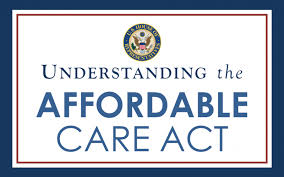Will the Affordable Care Act (ACA) finally offer me and my family of two less expensive health care coverage? After months of hard work and preparation by those here in Minnesota charged with finding consumers the best health care plan offerings possible on our state exchanges, the final answer to that question will have to wait a few more weeks. But preliminary postings from MNsure, our state health care exchange, look as though for one of us, the answer is a resounding, “yes.”
MNsure released preliminary health exchange plan information in early September. By October 1, when the exchanges “go live” I will have my final answer. Currently, the MNsure site lists information for only individuals and families of 4. As a family of two (my husband and I file a joint tax return), we still are extrapolating the posted information. But it looks promising even though we earn just enough income to keep us from receiving any tax credits or financial assistance associated with the ACA. So what does the ACA do for a self-employed, middle-class American family of two, on the cusp of Medicare but not quite there yet?
It improves our access to better health care coverage, and will probably save my husband close to $200/month for his plan premium. The ACA will offer “metal” plans—bronze, silver, gold to differentiate the cost of the plan offerings. For more information on the “metal” plans, click here.
A bronze plan on MNsure for an individual his age lists at $240 month. That is just under $200/month less than his current premium for a $5,000 deductible plan he holds from Minnesota’s high risk insurance pool. That’s great news—especially since he is in top health and the preventative procedures he needs to receive in 2014 are now fully covered (no out-of-pocket expenses) because of the ACA. Barring any unforeseen health issues, our family of two appears to be saving money.
However, then it comes to me—someone needing to actually seek health care services in 2014. For more information on my individual situation and what put me into Minnesota’s high risk pool and a monthly plan premium of $329.21 for a $10,000 deductible policy click here.
 I have postponed seeking the health care services I need for two years and simply cannot go another year without obtaining services for cataracts and basal cell carcinoma. So what does that mean from a “metal” plan in a state doing as much as Minnesota to embrace the ACA? It means that no matter what “metal” plan I chose, I would still have to pay the maximum out-of-pocket amount of just over $6,300. The “metal” plan differentiator kicks in after that maximum deductible is met. After that, depending on what plan option I chose, I will either find that I have to pay 40, 30, or 20 percent of the remaining medical expenses I incur over $6,300. (Why do I feel as though I’m playing The Price Is Right?)
I have postponed seeking the health care services I need for two years and simply cannot go another year without obtaining services for cataracts and basal cell carcinoma. So what does that mean from a “metal” plan in a state doing as much as Minnesota to embrace the ACA? It means that no matter what “metal” plan I chose, I would still have to pay the maximum out-of-pocket amount of just over $6,300. The “metal” plan differentiator kicks in after that maximum deductible is met. After that, depending on what plan option I chose, I will either find that I have to pay 40, 30, or 20 percent of the remaining medical expenses I incur over $6,300. (Why do I feel as though I’m playing The Price Is Right?)
For example, if my cataract surgery were to cost me $10,000, I would be on-point to pay the first $6,300 for it. The remaining $3,700 cost would be split between me and the “metal” plan I choose. If I choose bronze, I would pay 40 percent of the $3,700. If I choose gold, I would pay 20 percent of the remaining charges. That of course is on top of the monthly premium I would pay—ranging from $240/month for bronze up to $382/month for the gold. So the $200/month savings on my husband’s monthly premium will have to go to pay for the out-of-pocket expenses and possible increase in monthly premiums I incur based on the “metal” plan I chose. Robbing Peter to pay Paul comes to mind.
Does your head hurt thinking about this? Mine does. How and why is it that our health care system so delineates into minutia when we’re talking about health care and the very survival for some people? That’s simple: we remain the only industrialized nation in the world with a “for-profit” health care delivery system. How crazy is our for-profit health care system that we now define your life’s worth as bronze, silver, and gold as if we are competing in an Olympic game rather than trying to live a healthy life.
I continue to be grateful that the ACA passed and the key benefits it provides is a first step. To recap, all plans offered in the MNsure marketplace include new consumer protections such as:
- No discrimination based on pre-existing conditions or gender
- No annual dollar limit on coverage
- No lifetime limit on coverage
- A cap on out-of-pocket costs
- Allows young adults to stay on their parent’s health insurance plan until age 26, unless they have access to coverage through their employer
- Requires that 80-85 cents of every dollar you pay for health insurance is spent on delivering or improving health care – or you get a refund from your insurance company
- Provides consumers a standard, plain language summary of your plan
However, the ACA falls far short of what the rest of the industrialized world offers its citizens for health care coverage. And the ACA does nothing to protect people from medical bankruptcy: what if I can’t afford to pay the out-of-pocket expenses I incur? I could still be sued in bankruptcy court. How insane is that? I remember telling someone about the “good news” we had from the preliminary rates posted on MNsure—that my husband would save close to $200/month in premiums for a “bronze” plan. He just sighed. He is from Australia and said to me, “Joanne, I don’t pay $200 month for total coverage.”
An in-depth recent piece in New York magazine takes the reader through the journey of the ACA, the Republican push to kill it, and the United States’ inability to move off its for-profit health care delivery system that lacks behind the rest of the world in terms of cost and accessibility. The article does, however, acknowledge the ACA as the first step needed for long-term reform:
“And health experts increasingly expect the reforms will bear fruit. “The ongoing slowdown in the health-care growth rate defies historical post-recession patterns and is likely to be sustained,” concluded PricewaterhouseCoopers in June. “It appears that the reforms will stick and health-care exchanges and other policies will bring competitive pressure to markets,” says Randall Ellis, a professor of health-care economics. “Although the proof for this point of view is not yet definitive,” reports the Health Affairs blog, “the depth and breadth of change suggest that significant transformation in the nation’s delivery system is under way.” Among healthcare wonks, this is no longer a controversial assertion: The evidence thus far suggests Obamacare’s cost reforms are a staggering success.”
If the ACA helps move us to the sanity of a single-payer system, then all of this is worth it. Access and affordability—key components of the ACA—are important features of any healthcare system. But as long as we continue to treat healthcare as an Olympic sport, where some lives are only worth a “bronze” medal, then we will continue to lag behind the rest of the industrialized world that long ago recognized healthcare as a human right.
As Donna Smith, Executive Director of Healthcare for All Colorado, said in a recent column:
“Our health care system is unjust, that much I think I have established over and over again. Our health care system wastes our health care dollars on some of the most inefficient and costly ways of providing care and keeps people from seeking care when it would be the most sensible and affordable. Our health care system is simply a reflection of our societal values. Our health care system values money over life, and values arrogance over compassion.”
If the ACA becomes the birth of a new way to deliver healthcare in this country, then it will be a success well beyond premiums and out-of-pocket expenses that I incur in 2014.


